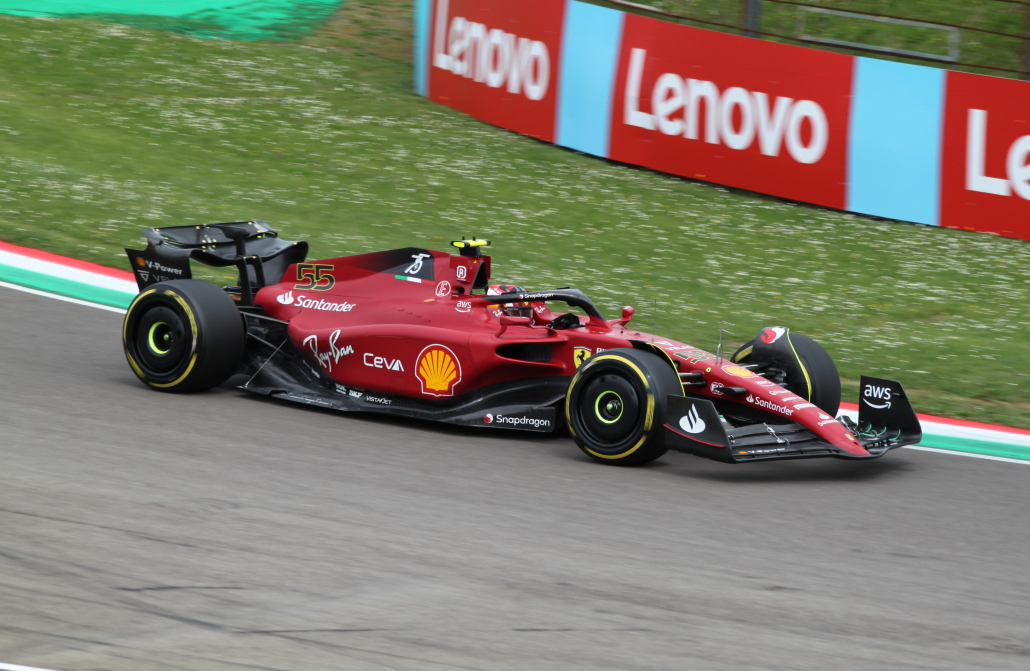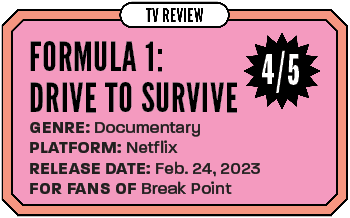Lights out and away we go

(Wastrick | Creative Commons)

What happens if you build one of the fastest cars in the world then hand the reins over to a twenty-something year old with pride to protect and an innate urge for speed? Find out in the fifth season of Netflix docuseries, “Formula 1: Drive to Survive.” This season, released Feb. 24, follows 10 teams, 20 drivers and cars with top speeds well over 200 mph in the perfect storm of high stakes and bruised egos. This docuseries covers the intense dramatics of Formula 1 through the eyes of the drivers, team principals and racing experts.
Twenty-two rounds of official races around the world took place during the 2022 Formula 1 season. From the lavish street circuit in Monaco to the Abu Dhabi Marina circuit, Formula 1 is not a sport confined to a single space. There are just 20 drivers in all of Formula 1 racing and climbing the ranks to those coveted seats on the grid is a grueling experience. It is a small and selective circle, meaning a driver’s biggest rival might double as their childhood best friend, and one’s teammate is their fiercest competitor. Each pair of teammates across the grid drive cars identical to each other. If one teammate is slower than the other, it is because of their driving, not because their cars are any different. The entertaining intricacies and fragile power dynamic within the sport is what “Formula 1: Drive to Survive” thrives on. The show captures the rise and fall of beloved drivers, and the behind-the-scenes look at the politics of the sport.
The previous season of “Formula 1: Drive to Survive” saw the reigning seven-time World Champion and Mercedes driver Lewis Hamilton lose to Red Bull’s Max Verstappen during the Abu Dhabi Grand Prix. After so many years of Mercedes being five steps ahead of every other competitor, the Red Bull win disrupted the hierarchy of teams. The dominant reign of Red Bull took center stage in season five of “Formula 1: Drive to Survive.”
The Red Bull team quickly learned that when you take the top spot you also take ownership of the target on your back. With big moments throughout the 2022 season, “Formula 1: Drive to Survive” skipped over the key battle between Ferrari and Red Bull that characterized the start of the season. Once Red Bull had Ferrari in their rearview mirror of the championship race, there was little Ferrari could do to stay in the fight. However, the spar between Charles Leclerc and Verstappen was largely disregarded. For the beginning of the season, Leclerc looked like he was on track to win his first World Championship title. While team strategy and engine failures got the best of his wins, the helplessness of a talented driver stuck in a downward spiraling season was one of the most compelling storylines of the season notably missing from “Formula 1: Drive to Survive.”
The show also spent too much time focusing on the contention between team principals. The fighting between Christian Horner, team principal for Red Bull, and Toto Wolff, team principal for Mercedes, largely felt like a redundant pissing contest, just as it has for the past four seasons. Furthermore, focusing on the politics of the sport such as breaching the budget cap or the porpoising of cars, is not nearly as intriguing as the driving itself.
Season five of “Formula 1: Drive to Survive” also covered the appropriately nicknamed “silly season” of Formula 1. The time over the summer break is when drivers try to secure their spot on the grid for the next season. The 2022 “silly season” kicked off with the retirement announcement of Sebastian Vettel. Vettel, who is a four-time World Champion and former driver at Red Bull, Ferrari and Aston Martin, announced his departure in July of 2022. The open seat at Aston Martin was filled by Fernando Alonso leaving a spot open at Alpine. Alpine then turned to French driver Pierre Gasly, who had previously been a part of Alpha Tauri. The most shocking turn of events was McLaren signing young Oscar Piastri to be their second driver — essentially kicking veteran Daniel Ricciardo out of Formula 1. Ricciardo spent the remainder of the season scrambling to find a spot on the grid, reverting back to his original team, Red Bull, as their third — or reserve — driver. For 2023, Ricciardo will essentially be a benchwarmer if Verstappen or Sergio Perez can’t race.
A behind-the-scenes look at the “silly season” in Formula 1 is something “Formula 1: Drive to Survive” adds another layer of depth to. While fans saw this all play out on social media in real time, it is much more dynamic in the show. The show allows viewers to hear the conversations that happened behind closed doors and see the unpolished reactions of drivers before they compose themselves for the press.
Despite the speed and selfishness needed to win, there are moments where there is an accident so bad everything stops. Moments such as the 2022 Silverstone Grand Prix made the roar of each engine disappear and the cheers from fans halted by stunned silence. The Silverstone race, which was covered in “Formula 1: Drive to Survive,” was the crash that flipped the car of Zhou Guanyu. The car turned multiple times until he was stuck sideways between two barriers with no way of getting out.
When crashes occur, the drivers no longer care about the name of the car they drive nor their order in the race. It is one of the times so frightening that humanity transcends any competitive spirit and suddenly the millions watching are just hoping the driver in the crash will live. In this case, Guanyu was able to walk out of the car and suffered little to no serious injuries. Retelling this moment highlights the oft-forgotten point that each time a driver steps into their car, there is a possibility that their lives will be taken by a split-second crash. Moments like the Guanyu crash make the “Drive to Survive” title that much more literal.
Formula 1 is not a sport someone can fully grasp after watching one race, and maybe not even after a full season of the renowned Netflix show. The intricacies of the sport are highlighted in “Formula 1: Drive to Survive,” as it portrays how far a driver is willing to go in chasing the checkered flag, answering the question: “How far do they need to drive to survive?”

